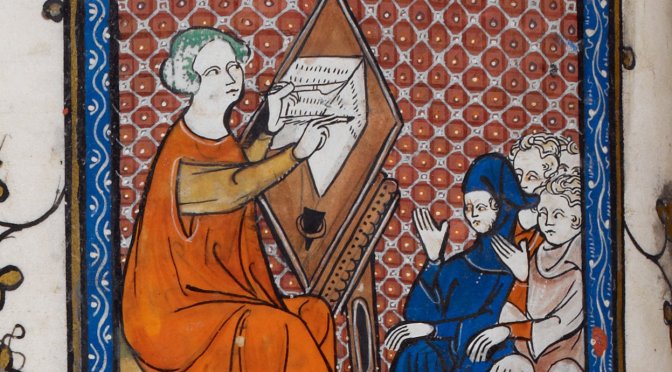Last week, I passed yet another milestone in my DPhil career: delivering my first undergraduate lecture. There was definitely a thrill to walking into the Victorian grandeur of the Examination Schools to see my name and lecture up on the screen, directing interested audience members to Room 2.
Admittedly, such interested parties were few in number: a couple undergraduates and a friend providing moral support. I also have a feeling my best intentions of a conversational pace and plenty of pauses were quickly overshadowed by my desire to just get through the thing in one piece.
Still, as first lectures go, I think I’m fairly pleased.
I gave the lecture as part of a Faculty scheme to allow advanced DPhil students an opportunity to prepare and deliver a single lecture in Trinity term, for the theoretical benefit of third-year undergraduates revising for their final examinations. The titles of the DPhil lectures are posted along with everything else on the lecture list, but otherwise not particularly advertised (from anecdotal evidence, having 0 to 3 actual undergraduates in attendance seems to be about the norm).
Despite its minimal impact in terms of audience numbers, though, it did turn out to be a useful experience and one I’m glad I took advantage of. Writing the lecture was certainly more difficult than I had anticipated.
It’s difficult to pitch for an unknown audience – when you’ve spent three years buried in a particular vein of research, you tend to lose perspective on what is or isn’t common knowledge. What exactly will the faceless undergraduate know or not know? At 50-minutes, it’s also an unfamiliar length for those of us accustomed to 20-minute conference papers. And of course, in a one-off lecture, rather than a lecture series, there’s always the temptation to slip things in you feel they really ought to know, or that you know to be interesting, even if it doesn’t precisely fit into the line of your argument.
My hastily selected lecture title–composed while jet-lagged at a conference in Australia–had me exploring the intersection between intellectual and political culture in the High Middle Ages. Given the nature of my own research, I decided the most interesting approach for the students would be by way of the intellectual sources they generally have less exposure to.
I have to admit, I initially got a little carried away with far too many pretty pictures from the Liber Floridus, but many (many!) drafts later, when all my favourite illustrations and virtue diagrams were strewn across the cutting room floor, I had finally settled on a more streamlined approach.
The final lecture took just a few types of often understudied ‘intellectual’ source types–biblical commentary, sermons, and mirrors for princes treatises–and used them to demonstrate how ideas could filter through from intellectual to political culture, with examples from my own research on counsel. In essence, the concept I most wanted to communicate was that ‘ideas matter’, and that the excitement of doing this sort of history is figuring out which ideas, how much, and to whom.
And the great thing about the lecture writing process (all stress and existential crises and tiny audiences aside) is that trying to get undergraduates excited about something restores some of your own excitement. The sources I was most comfortable discussing in a lecture were definitely those that I had myself discovered in a ‘Eureka’ moment, or painstakingly transcribed and translated from the original manuscripts – sources which I was uniquely equipped to convey to students who might one day go on to acquire the skills to do the same thing themselves.
And I suppose the whole thing just makes one feel like a historian!
[Image: ‘Prudence’ in Laurent d’Orleans’ La Somme le Roi, from British Library, MS Royal 19 C II, f. 48v (14th c.)]
